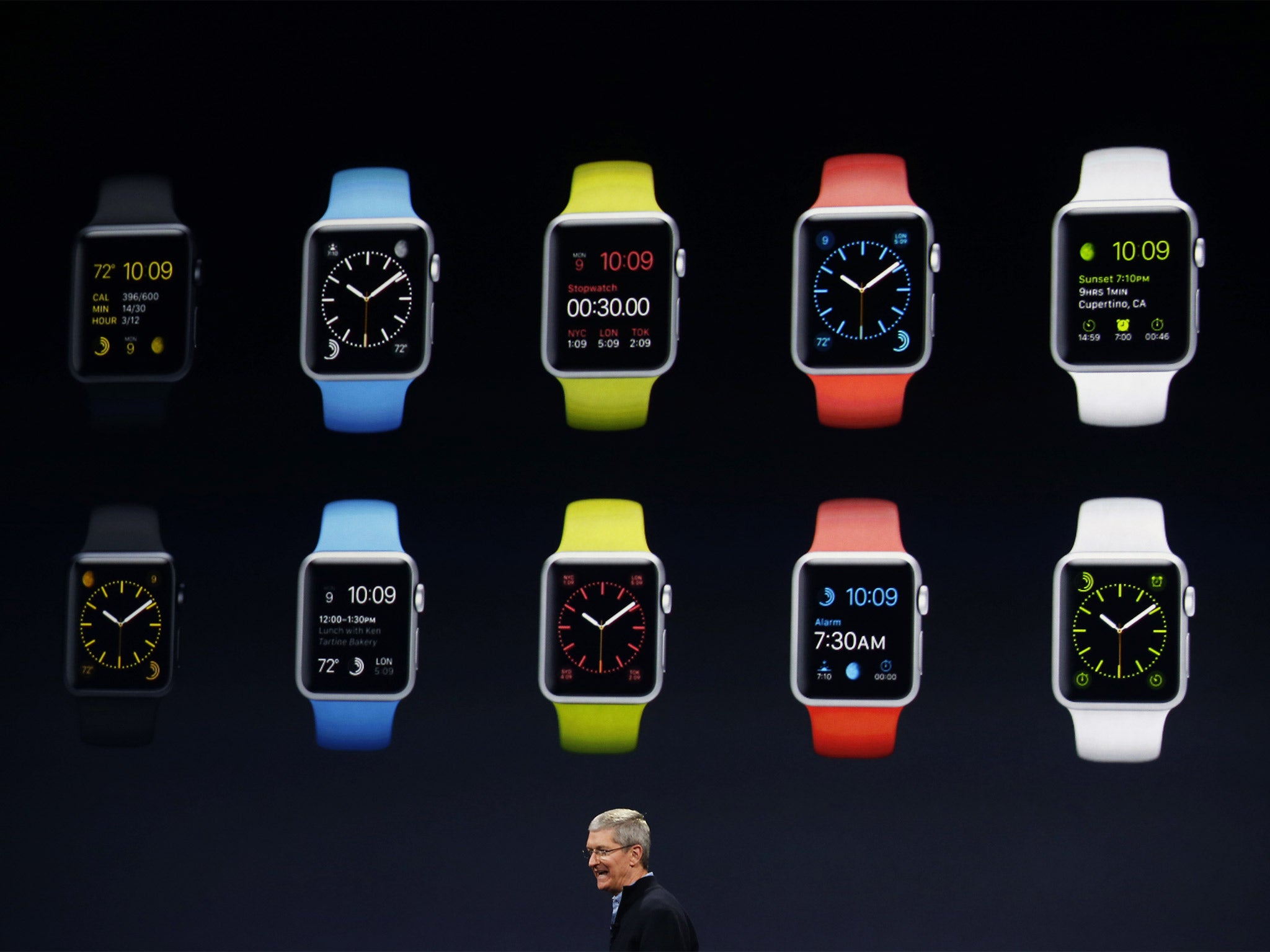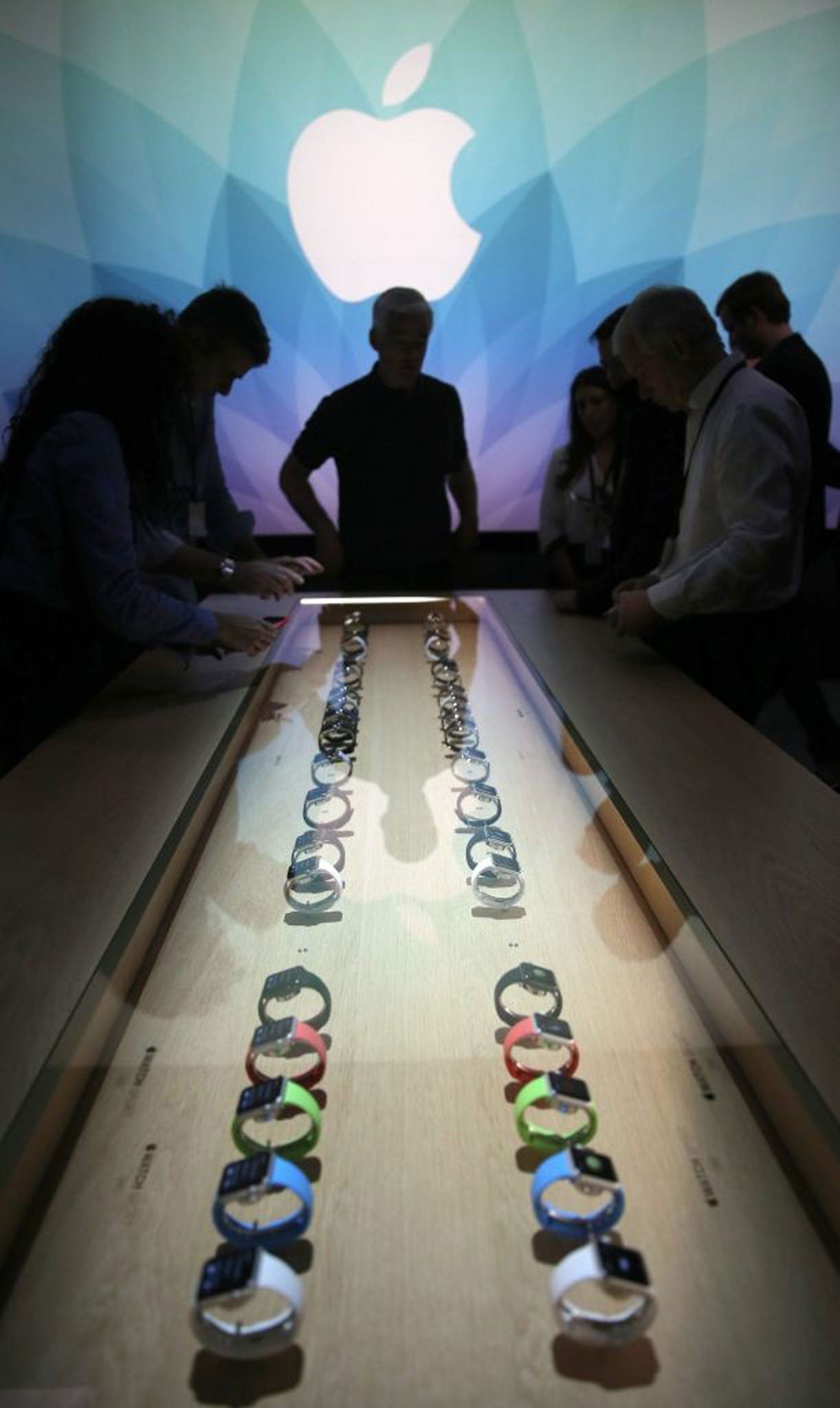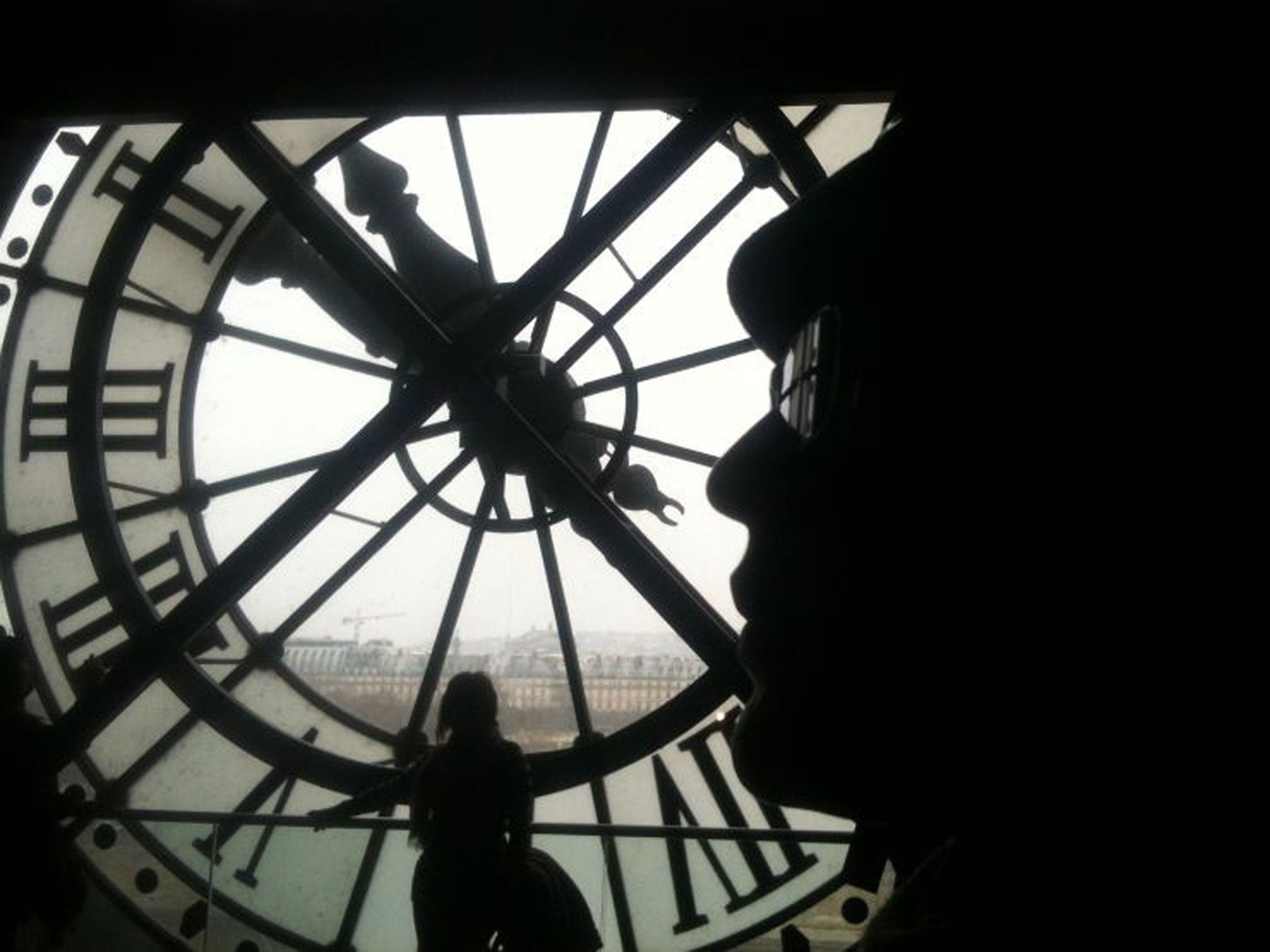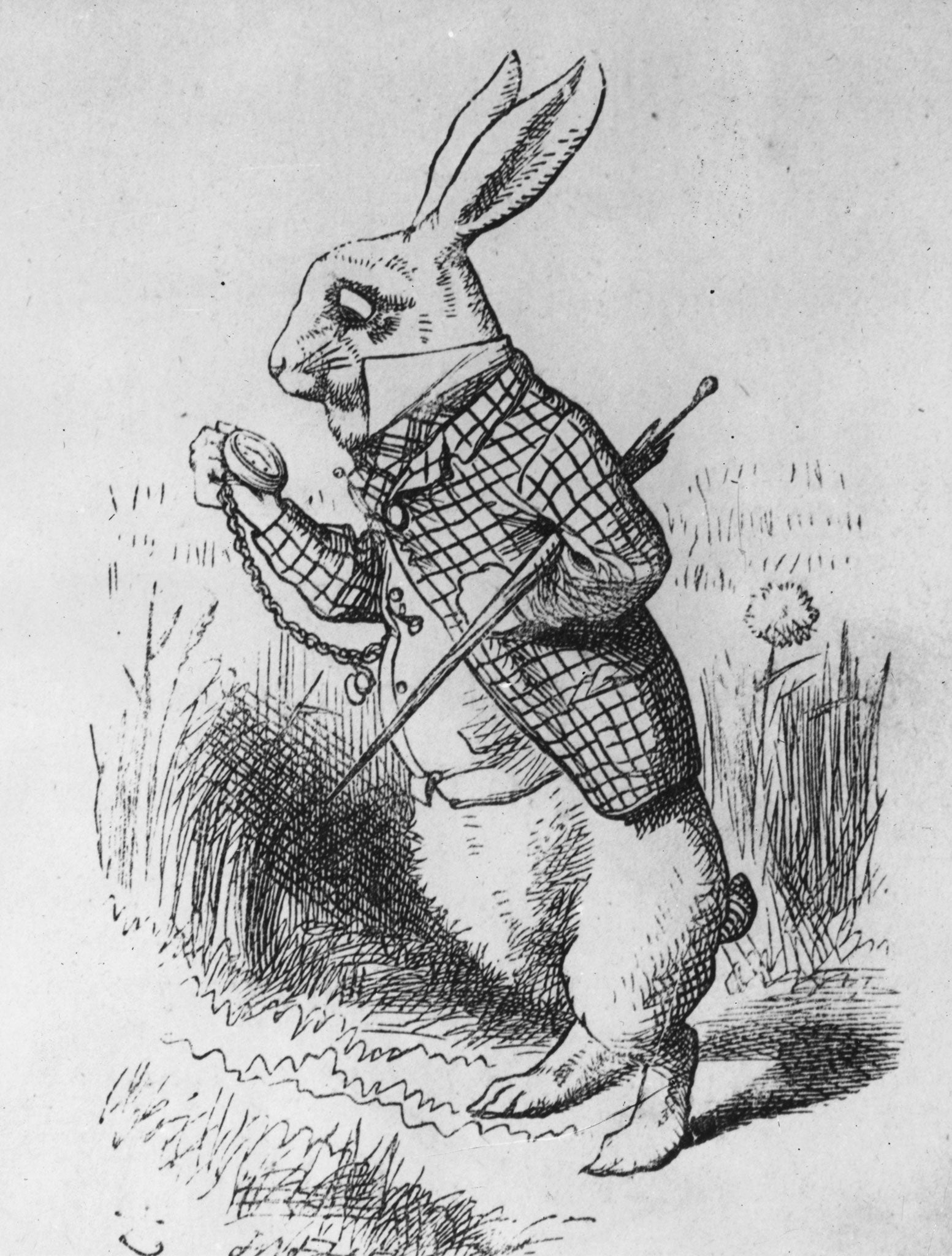Apple is launching a revival of the watch - but how do we really tell the time in the digital age?
Simon Usborne explores the cultural, historical and scientific significance of ticks and tocks

A century after soldiers strapped clocks to their wrists, and marketing men convinced us all to pull time out of our pockets, mobile phone companies have put it back, as so many of our old watches tick in the darkness of cupboards and drawers. The international symbol of time checking should no longer be a tap of the wrist, but a press or swipe of the thumb. But now those same companies are attempting to turn back the clock and restore time to our person.
On Monday, Apple showed off its latest device. You probably noticed. Apple Watch, which goes on sale next month, is a strap-on iPhone accessory with unlimited applications. It will take your pulse and allow you to do an impression of Dick Tracy, but when Tim Cook gave "the most advanced timepiece ever created" the big sell, the models projected behind him initially displayed only one function: a retro clock face. The time? An aesthetically pleasing nine minutes past 10.
Today's marketeers are using time and the familiarity of its analogue measurement, to convince us that we need smartwatches in the digital age. Google tried it with glasses, but its attempt to buy our most valuable real estate – our faces – has so far failed. .
Apple has ditched the "skeuomorphic" features of the iPhone that, for example, made the notes app look like paper. But in its bid for our wrists, its watch goes back to basics, with old-style, if virtual, hands, and a real crown wheel.
The arrival of these devices, many of which bear an even closer resemblance to old timepieces, raises new questions about our shifting relationship with a constant yet slippery measure. It can crawl, race, fly, run out or even seem to stand still, but what does time look like? Who controls it, and how does it reach our wrists? What time is it right now, and how do you say it? (Right here, it's almost midday).
Let's start with the silent tick of a smartwatch. A second is the time it takes Earth to rotate once a day, divided by 86,400 (the number of seconds in 24 hours), right? Wrong.
That astronomical definition served us well in the age of the sundial, and even after medieval horologists invented mechanical clocks. But we have since come up with ways to divide a second into billions of parts. The best clocks reveal Earth, which wobbles on its axis, to be a pretty dodgy timekeeper.
Leon Lobo is part of the team that is responsible for keeping Britain on time, to an extraordinary degree, at the National Physical Laboratory (NPL) in south-west London. He knows what a second is, because 60 years ago, NPL's first caesium atomic clock ticked into life. Rather than rely on the movement of planets, the swing of a pendulum or the vibration of a quartz crystal, it exploited the rhythms of atoms in a liquid metal.
"Currently the definition is the duration of 9,192,631,770 cycles of the microwave radiation that corresponds to the electronic transition between two hyperfine ground states of the caesium 133 atom," Lobo explains. "That is a second."
Simple? Perhaps not, but what it means is that the most accurate of the clocks in Lobo's lab today will neither gain nor lose a second in more than 150 million years. And thanks to the way that time is now disseminated and received, nor will a smartwatch. Yet still, that is not accurate enough for the world we have built. Lobo says that the next generation of atomic clocks, which use optical light rather than sluggish microwaves, redefine the second. "They would effectively lose or gain a second over the lifetime of the universe, or 14bn years," he says.
But, he adds, "So what?" When we only need time to be accurate enough to tell us whether to run for a train, which will leave late anyway, why do we need to reduce it to an almost unimaginable level, uncoupling it from the stars? (To get around this, and keep time in sync with Earth so that day remains day, atomic clocks add a leap second every few years. Just before midnight on 30 June this year, 11:59:59 will turn to a weird looking 11:59:60, before striking 00:00:00 as normal.) The answer reveals the modern and growing purpose of timekeeping, which goes way beyond the need to manage your day.

First, a couple more links in the time supply chain. (Don't worry, it will only take you five minutes and 40 seconds to finish this article at average reading pace; time well spent, surely). Before it reaches you, time travels, via satellites equipped with their own atomic clocks, from the NPL and 50 other national institutes, to a lab outside Paris. There, the International Bureau of Weights and Measures (BIPM) collects and averages time to produce International Atomic Time, which gives us Coordinated Universal Time. UTC, as its known, is the time; the global standard and successor to Greenwich Mean Time. If you want to know the real time in real time go to BIPM.org, and check the UTC master clock.
To get time back out of Paris and to you, we rely on those clock-bearing satellites, which beam time around the world as part of the Global Positioning System (GPS). UTC is also supplied to telecommunication networks, which is why your phone automatically corrects itself when you land in a new time zone and pick up a signal. The NPL also transmits a radio time signal called MSF, from an antenna in Cumbria (it used to be in Rugby).
But there is a good chance that, more often than not, you tell the time using the numbers in the corner of your computer screen: one of humankind's greatest inventions reduced to a grey taskbar. "That time is maintained by my protocol," says Professor David L. Mills, one of the architects of the internet and the grandfather of online time. Now 78, Mills still thinks in ticks and tocks almost 35 years after he invented Network Time Protocol. NTP, which he still monitors on a machine at his home near the University of Delaware, is what your computer uses to deliver UTC. It allows the simple clock in your machine to sync perfectly with other computers.
Such harmony is vital, not because it matters to you, but because the systems that keep the world turning today – air traffic control, monetary markets, GPS – demand it. As a result, time has become a commodity, sold in Britain by Lobo to banks, among other clients. Without it, he says, "if you sent data from A to B, the time stamp at B could show the data arrived before it left." Such discrepancies, at the microsecond level, could bring down whole networks. The same principle applies to phones and smart watches, which receive data from multiple sources. To process this, and keep working as machines of immovable parts, they need to know invisibly precise time even if you don't.
You'd also be lost without good time. When you call up Google Maps, or use a satnav, GPS satellites use atomic time to measure how long signals take to travel between you and space. Several satellites then calculate those distances to pinpoint your location. And it's here that errors in timekeeping that you could never perceive equate to distances that you can. "Three nanoseconds is effectively one metre," Lobo says. A nanosecond, to be clear, is one billionth of a second. By that calculation, if GPS suddenly got out of whack by a whole second, you, or a ship in the night, could be off course by 200,000 miles (except that you couldn't, because the world isn't even that big).
Things get really interesting when you throw other things into the equation of time. Gravity affects the frequency of atomic clocks, so that clocks on different floors of a building show different time. Optical clocks will change even if you raise them by one centimetre, Lobo says. "To compare clocks from one lab to another, we need to do surveys to understand exactly where they are," he adds. Scientists are now considering the launch of a global master clock into orbit, away from such earthly inconsistencies. In the meantime, these tiny differences give clocks another use. "You can fly them around and map the gravity potential at an unprecedented spatial resolution," Lobo explains. "You can use clocks to find oil and gas, or detect sinkholes."

Clocks so accurate they can effectively scan the ground beneath our feet. And there are more plans, Lobo says, to use them in space to test the speed of light. Yet even with these advances, we retain a very human tolerance for lax timekeeping. Perhaps you get your time in the morning from the radio. The BBC's "pips" and regular time checks echo the bells of the earliest church clocks ("clock" comes from the Latin clocca, or bell).
One recent morning, as John Humphrys rushed to end Today before the 9am pips (as played via the BBC radio app on an iPhone), comparison with UTC revealed that, while he hit the pips bang on, Humphrys was actually 38 seconds late. That's more than seven million miles in GPS terms, but who even notices such a delay, much less arrives late for work?
This digital lag is partly intentional, to stop radio cutting out as often when the signal drops (or at least to give it half a minute to recover). A digital radio or TV has a shorter delay, of a couple of seconds, some of that being the time the device takes to decode the signal. A BBC engineer explains that, because DAB transmitters need to work at precisely the same time, a further half-second delay is added to give the more distant transmitters time to catch up with local ones. Either way, he goes on (he prefers not to be named), the two boxes that issue the pips, in the basement of New Broadcasting House, are never late because they are linked to three BBC master clocks. They receive atomic time via GPS and MSF, and relay it to studios using cables of equal length.
The planets no longer control time in the digital age, but nor do we, whether we're on time, or 38 seconds late. For many of us, the biannual ritual of changing the clocks is a quaint memory of phone calls to 123. (The talking clock still talks – why not try her today?) But until recently, Jack Riley had remained loyal to his old, dumb watch – even if, he says, "I always set it five minutes fast so that I got to everything a bit early". An expert in digital engagement at The Huffington Post and visiting fellow at Harvard College, Riley has just published a report about the future of smartwatches. He now wears a Moto 360 device. "Obviously I can't change it any more," time having become more accurate than he needs or wants. "But my watch also shows me how long until my next appointments. In a way it doesn't really matter what the time is any more."

Yet, as Tim Cook's sales pitch showed, time remains the primary, if not unique, selling point of smartwatches. Riley compares their skeuomorphic marketing (imitating real world objects) to that of other new devices. "They used to build TVs into cabinets because people were comfortable with furniture in their homes," he says. Joe Santana is a former CEO and president of Timex, and will next week launch the Vector Smartwatch. "They cannot look like a mobile phone on the wrist," he says, recalling how Timex failed to make smartwatches happen in the 1990s. (Its wearable pager, made with Microsoft and Motorola, wasn't pretty, or very clock-like.) "The Vector will be a watch first and smart second." But, if smartwatches take off this time, Riley predicts that their current "watchiness" will fade as we get used to them, just as we got used to TVs that weren't made of wood.
Riley also found that, for many smartwatch wearers, the habit of checking for alerts or information, while less physically intrusive than pulling out a phone, could seem ruder because other people assume the wearer needs to be somewhere else. And when there's more to see and fiddle with, watch checking becomes even more compulsive than phone checking. Samuel Pepy's knew the feeling. In 1665, the diarist regretted his own "folly and childishnesse" because "I cannot forbear carrying my watch in my hand in the coach all this afternoon, and seeing what o'clock it is one hundred times; and am apt to think with myself, how could I be so long without one; though I remember since, I had one, and found it a trouble, and resolved to carry one no more about me while I lived."
William Andrewes is of a similar mind. Few people are as obsessed with timekeeping, yet the renowned British horologist, clockmaker and curator does not wear a watch. Instead, he makes sundials. They show time to the nearest minute, while also tracking the precise movement of the sun over a projection of Earth.
"For civil timekeeping, a minute is all you need, and that kind of accuracy in clocks was achieved in the 17th century," he says.
Andrewes, who is 64 and lives near Boston, sees his sundials as "a marriage of science and art... when you observe the dial, you can see the Earth turning." He's no Luddite, however, and carries an iPhone. But he wonders if we will ever bond to smartwatches, even if we buy the marketing. "When I work on pieces made 100 years ago, I feel a connection with the maker," he says. A hundred years from now, when those pieces will still be capable of ticking, will future horologists pick up an Apple Watch and feel a connection to Jonny Ive or Tim Cook?
"Will they even be able to turn the thing on?" Andrewes asks.
Join our commenting forum
Join thought-provoking conversations, follow other Independent readers and see their replies
Comments